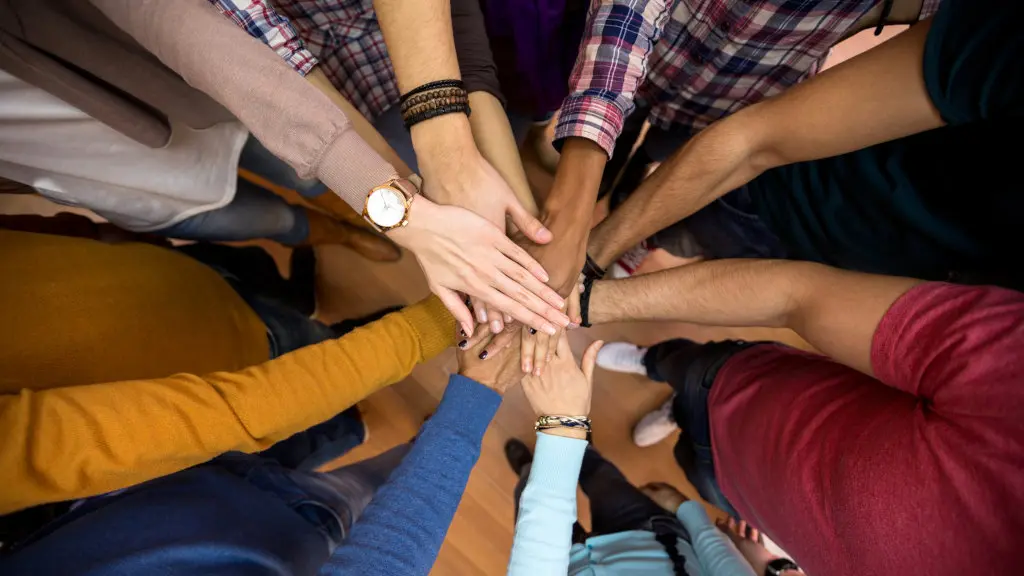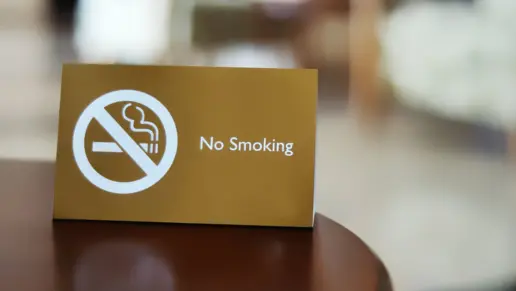Harm reduction is a compassionate and pragmatic approach to public health issues including drug and alcohol addiction. The approach seeks to reduce the adverse health, social, legal and economic effects of substance use without requiring immediate abstinence.
Rather than insisting on abstinence as the only acceptable outcome harm reduction recognizes that people engage in substance use for various complex reasons including trauma, poverty, mental health struggles, chronic pain and systemic oppression.
This inclusive strategy helps people minimize the risks related to their behavior while offering nonjudgmental care and access to services that foster long term wellness.
This philosophy moves away from moralizing or criminalizing substance use and instead centers on dignity and community empowerment. Harm reduction is based on the belief that everyone deserves access to tools that protect their health and well being regardless of where they are in their relationship with substances.
In this article we’ll explore how harm reduction programs work and how they help people with substance use disorder.
Drug Rehab Centers Nearby
Finding facilities near you…
Key Facts
- Harm reduction prioritizes the safety, dignity and wellbeing of people who use drugs regardless of their substance use status or recovery readiness.
- A harm reduction approach includes practical and evidence based strategies such as syringe service programs, safe disposal sites, access to sterile equipment, supervised consumption facilities and overdose prevention tools like naloxone and fentanyl test strips.
- Harm reduction measures are proven to save lives, reduce disease transmission and empower people to make healthier choices at their own pace.
- Harm reduction is rooted in a public health and human rights framework that views drug use as a health issue rather than a moral failing or criminal act.
- These approaches actively support health equity by tailoring services to high risk and marginalized populations including young people and those who are unhoused, LGBTQ+, sex workers, pregnant and postpartum persons, IV drugs users and those exiting incarceration.
- According to the Centers for Disease Control and Prevention and the World Health Organization harm reduction dramatically reduces the spread of HIV and hepatitis C, prevents fatal overdoses and contributes to safer communities.
- Harm reduction lowers the burden on emergency rooms, correctional facilities and public health systems. Research shows that every dollar invested in harm reduction is saved in emergency medical care, infectious disease treatment and criminal legal system costs.
How Harm Reduction Started
The term “harm reduction” gained prominence during the HIV and AIDS epidemic of the 1980s. Intravenous drug use was once one of the primary routes of HIV transmission but many healthcare institutions denied services to active drug users.
Grassroots organizers, public health workers and people who use drugs themselves took action by launching syringe exchange programs to distribute sterile needles and reduce infections. These programs were often unsanctioned or illegal but reflected a revolutionary shift of prioritizing human life over punitive policies.
This early movement framed substance use not as a moral failing but as a public health challenge that could be mitigated with compassion and evidence based tools.
Harm reduction evolved over time into a multidisciplinary framework encompassing strategies like:
- Safe consumption sites
- Overdose prevention education
- Policy advocacy
- Managed alcohol programs
- Drug checking services
- Housing first models
- Digital support tools
Harm reduction is still controversial in some political environments but it’s increasingly embraced worldwide as a vital and humane approach to addressing substance use.
Why Harm Reduction Matters Today
We are living through a multifaceted public health emergency driven largely by synthetic opioids such as illicitly manufactured fentanyl which is 50 times more potent than heroin. Its infiltration into the drug supply has turned routine use into a potentially lethal act.
The opioid overdose epidemic claims more than 80,000 lives each year in the United States alone. It disproportionately impacts communities of color, people in poverty and individuals with co-occurring mental health conditions.
This crisis coincides with rising rates of hepatitis C, bacterial infections and homelessness along with systemic racism in healthcare and widespread underfunding of mental health services.
Many people who use drugs are met with criminalization, stigma and isolation rather than offered care and support. Emergency departments are overburdened and traditional substance use treatment programs often exclude those who are not ready for abstinence.
Harm reduction offers an essential alternative. It helps keep people alive and connected through naloxone, safe supplies, nonjudgmental education and survival oriented services. It provides a bridge to medical care, housing, mental health support and recovery for individuals who might otherwise be left behind.
This model is supported by decades of research and shown to be cost effective and socially beneficial.
Harm Reduction vs Abstinence Only vs Treatment
A common misconception is that harm reduction and abstinence based treatment programs conflict one another. Harm reduction can work alongside traditional treatment and supports any positive change in a person’s life.
Abstinence only programs often require individuals to stop using substances entirely before accessing services. This may work for some but it excludes many others like those grappling with trauma, homelessness or severe health conditions.
Harm reduction removes barriers to support by accepting people as they are. It provides tools that allow for safer use, builds trust through consistency and compassion and respects each person’s timeline for change.
Many people engage in harm reduction services first and eventually choose treatment or abstinence when they feel ready. Harm reduction acknowledges that recovery is not a linear journey. It may include stops, detours, relapses and new beginnings.
Clinical treatment such as medication assisted treatment or MAT, detoxification or residential rehab is lifesaving for many.
These models often remain inaccessible due to stigma, cost, geographic barriers or rigid entry requirements. Harm reduction helps people stay alive long enough to access those options while promoting health, connection and dignity in the interim.
Core Principles and Philosophy of Harm Reduction
Harm reduction uses common sense measures to help people stay safer while they battle addiction. While it’s a practical strategy it’s also based on certain key principles and ethical philosophies that can help you understand this approach.

Human Rights and Dignity
Harm reduction is grounded in the belief that people who use drugs are full human beings who are just as deserving of safety, compassion and agency as people who don’t have substance use disorder.
Too often these individuals are criminalized, marginalized and treated as problems rather than people. Harm reduction challenges that framework by recognizing drug users as community members with unique needs, talents and contributions. It views dignity as non-negotiable and understands that respect is foundational to effective care.
Programs emphasize confidentiality, non-punitive engagement and choice driven care that honors individual autonomy. Peer involvement like counseling from people with lived experience adds cultural relevance, credibility and trust.
These relationships transform service delivery by making it more relatable, effective and empowering. This approach shifts services from surveillance and control toward mutual aid, partnership and solidarity.
Meeting People Where They’re At
Rather than setting preconditions for participation harm reduction welcomes people into care regardless of their substance use status, readiness for change or history. Services are designed to be easily accessible.
This includes mobile outreach vans and street based care teams in addition to flexible hours, walk in policies and drop in centers. It also removes barriers like requirements for ID, insurance or abstinence. Harm reduction brings the help to them instead of making them seek help themselves.
Meeting people where they’re at also means emotionally and culturally. It involves listening without judgment, validating individual experiences and tailoring services to reflect community needs and values.
Practitioners acknowledge the complex reasons behind substance use. This often includes trauma, social isolation, pain and systemic oppression. Respectful engagement fosters trust which is essential for long term change and healing.
Based on Evidence and Data
Opponents of harm reduction often accuse this strategy of being overly driven by emotion and claim that it makes providers feel like they’re helping when they’re just enabling addiction. The truth is actually the opposite because harm reduction protocols are driven and supported by practical data.
Harm reduction practices are rooted in rigorous public health data and continual evaluation. Programs track overdose rates, naloxone reversals, disease outbreaks, service utilization and client outcomes. This data informs resource allocation, staff training and service adaptation.
Research from agencies like the CDC and NIH as well as SAMHSA and WHO confirms that harm reduction reduces overdose deaths, prevents HIV and hepatitis C, improves engagement in care and lowers public healthcare and criminal justice costs. Evidence indicates that harm reduction is both compassionate and cost effective.
Equity, Cultural Competence and Destigmatization
Systemic racism, homophobia, xenophobia and ableism shape who is most at risk for substance related harm and who receives or is denied care. Harm reduction centers equity by addressing these disparities head on through intentional hiring, community partnerships and inclusive policies.
Programs prioritize trauma informed practices, use gender inclusive language, offer interpretation services and build relationships with underrepresented groups. Staff are trained to reflect the values of cultural humility and to understand the unique needs of Black, Indigenous, LGBTQ+, disabled and immigrant communities.
To combat stigma harm reduction programs engage in public education campaigns, host peer led forums, support leadership with lived experience and amplify community storytelling. Breaking down bias and misinformation creates safer spaces for both individual recovery and collective healing.
Key Harm Reduction Strategies and Tools
Now that we’ve explored the core goals and philosophies that guide harm reduction let’s dive into what it looks like in practice. Each program is unique but there are many different strategies and tools that harm reduction programs may use.
Overdose Prevention
The cornerstone of harm reduction in the era of synthetic opioids is overdose prevention. This includes widespread distribution of naloxone. This is a medication that rapidly reverses opioid overdose. Programs provide intranasal and injectable forms of naloxone alongside training in how to recognize and respond to an overdose.
Fentanyl test strips and advanced drug checking technologies allow users to detect harmful contaminants in their supply. These tools are especially vital at festivals, shelters, nightclubs and youth drop in centers where polysubstance use is common.
Apps and virtual buddy systems offer overdose alerts and emergency notifications for individuals who use them alone.
Safer Use Supplies
Syringe service programs provide sterile injection equipment, safe disposal containers and education on safe injecting. These programs have been shown to reduce HIV and hepatitis C rates dramatically while building trust with participants.
Many also offer safer smoking kits, alcohol swabs and sterile water and wound care materials. They may also offer sexual health resources like condoms and dental dams. They can provide vitamin C packets for safer drug dissolution and foil for safer inhalation and reduced injection frequency.
These supplies reduce harm and prevent disease transmission. While doing this they also provide consistent contact points for health education, peer support and referrals to housing, mental health and treatment services. That means that people with addiction develop trust and connections with people who can help them.
Supervised Consumption Sites
Also known as overdose prevention centers these facilities allow individuals to use pre-obtained substances under the supervision of trained medical staff. If an overdose occurs then help is immediate and potentially life saving.
No overdose deaths have ever been recorded at a supervised consumption site globally. These centers also reduce public drug use, improve community sanitation and connect clients to healthcare, detox programs, housing support and other critical social services.
MOUD (Medications for Opioid Use Disorder)
Medications like methadone, buprenorphine and naltrexone help manage opioid dependence by reducing withdrawal and cravings. Harm reduction programs support “low threshold” access that allows patients to begin treatment without abstinence requirements or long waitlists.
Telehealth has expanded access to MOUD particularly in rural areas. Programs now allow same day prescriptions, mobile delivery and in home induction support.
Managed Alcohol Programs and Stimulant Support
MAPs provide individuals who have alcohol use disorder with regulated doses of alcohol in a safe environment. This reduces withdrawal related harm, ER visits and street drinking. These programs exist for alcohol in particular because quitting alcohol abruptly can be life threatening.
Strategies for stimulant use like meth or cocaine include reward based programs, slow release stimulants and structured day programs that provide food, safety and housing referrals.
Digital and Mobile Access
Many harm reduction services have embraced digital tools. These include text based refill reminders for naloxone, maps of harm reduction services, telehealth for MOUD and app based safe use check-ins.
Mobile outreach vans bring supplies and education to populations that are hard to reach including unhoused individuals and rural residents.
Peer Support and Education
Peer navigators are individuals who have experienced drug or alcohol addiction themselves. They can serve as mentors, advocates and outreach specialists. Their presence helps reduce stigma and build trust with clients.
Community based education like overdose response training and public forums promote widespread awareness. Youth specific content, social media campaigns and culturally relevant materials ensure education reaches all corners of the community.
Populations That Benefit Most from Harm Reduction
Harm reduction is driven by equity. It truly helps anyone who is struggling with addiction but it makes the largest difference for certain populations.

Youth and Young Adults
Young people are increasingly at risk for overdose. Counterfeit pills sold online pose a particular threat to young people. Harm reduction strategies for this group include youth centered drop in centers, school partnerships, social media engagement and anonymous access to supplies.
Pregnant and Postpartum People
Fear of punishment or child removal keeps many pregnant individuals from seeking help. Harm reduction programs offer compassionate care including MOUD access, prenatal education and postpartum doula services. These interventions improve health outcomes for both parent and child.
LGBTQ+ and Gender Diverse Communities
High rates of substance use among LGBTQ+ individuals are linked to stigma, trauma and discrimination which can prevent them from getting help. Harm reduction programs that affirm identity and use inclusive language can build safe spaces for healing and care.
Rural and Indigenous Communities
Access to addiction treatment in rural and tribal communities is often limited. Telehealth, mail delivered supplies and tribal led programming are helping to close the gap and bring harm reduction where it’s needed. Cultural safety and sovereignty are prioritized through partnerships with tribal health boards.
People Who Are Unhoused
People experiencing homelessness face elevated overdose and infection risk. Harm reduction services embedded in shelters, encampments and mobile units offer essential care. Housing first models focus on helping people get secure housing regardless of sobriety which improves long term outcomes.
Re Entry and Justice Involved Populations
Individuals leaving incarceration are at high risk of overdose due to reduced tolerance. Jail based MOUD programs, initiatives that provide naloxone upon release and legal aid services are crucial. Expungement support and housing referrals help reduce recidivism and foster reintegration.
Frequently Asked Questions about Harm Reduction
Yes. Many individuals begin with harm reduction and later transition to abstinence or treatment. There’s no wrong path. There’s only your path.
Laws vary. Some tools like fentanyl test strips are still considered drug paraphernalia in certain states. Contact local health departments or harm reduction coalitions for accurate information.
Use empathy. Ask open ended questions like “What helps you stay safe?” Avoid judgment and offer resources like naloxone kits.
You can carry supplies such as naloxone, fentanyl test strips, sterile syringes or smoking gear and alcohol wipes. You can also carry condoms, a CPR face shield and a contact method for emergencies.
You can volunteer with syringe service programs or outreach organizations, attend community training sessions, advocate for harm reduction legislation, support local initiatives and reduce stigma through education and open conversations.
Find Treatment Near You
Rehab.com is a free directory you can use to find addiction treatment centers in your area. You can find out what programs are available at various treatment centers and see which ones might be the best fit for you.
You can also use the SAMHSA Treatment Locator at findtreatment.gov to identify care options based on your needs. Search by location, level of care, accepted insurance and population specific services like LGBTQ+, youth and veteran programs.
Not sure where to start? Call SAMHSA’s confidential helpline. You’ll be connected to a trained professional who can help verify insurance, explain treatment options and offer immediate support.
Call A Treatment Provider
For a conversation about what treatment options are available to you.
Make a Call
Featured Facilities Near You
Finding facilities near you…





